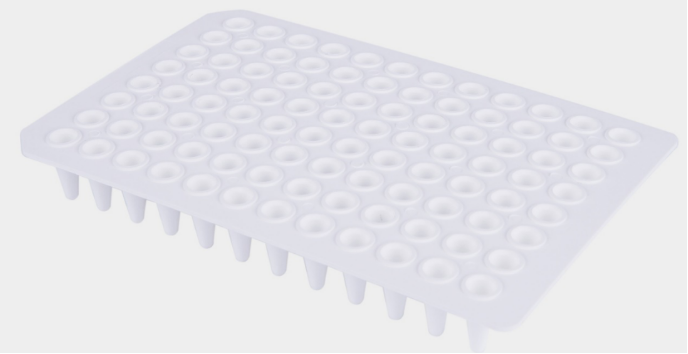Copyright © 2021 Suzhou Cotaus Biomedical Technology Co. Ltd. All rights reserved. Site Map Powered by 
Polymerase chain reactions (PCR) are one of the widely known methods use in life science laboratories.
The PCR plates are produced from first-class plastics for excellent processing and analysis of samples or results collected.
They have thin and homogenous walls to provide precise thermal transfer.
In preparation for real time applications, minute section of DNA or RNA are secluded and stored in PCR plates.
The PCR plates are highly efficient in heat sealing and restrict the flow of heat as well.
However, as effective and reliable the PCR plates are, error and inaccuracies sidle easily while processing samples.
Therefore, if you are interested in getting a good and high quality PCR plates. It is ideal to contact a reliable PCR plate manufacturer. With this you are assure of getting the best deal.
Here are some precautions to follow to avoid contaminations of reagents or samples and prevent inaccuracies from creeping into the results.
Incorrect positives or negatives occur due to the presence of impurities, which makes you doubt the results.
Impurities and contaminants occur in various forms such as unrelated DNA or chemical additives which eventually decrease the efficiency and effectiveness of the reaction.
There are numerous ways to greatly reduce the rate of contamination of the PCR plate.
Using sterilized filter tips is another useful way to prevent impurities from creeping into your samples through the pipettes.
Devote a completely clean set of equipment, comprising of pipettes and racks, exclusively for the use of PCR. This will guarantee negligible transfer of impurities or contaminants around the laboratory.
Utilize bleaches, ethanol on the pipettes, racks and benches to wipe off contaminants.
Allocate a reserved space for all your PCR reactions to further minimize particle contamination.
Use clean gloves at every step and replace them frequently.

The cleanness of the bench and equipment used when analyzing samples with the PCR should be maintained. It is essential to validate the degree of purity of the samples before analysis and processing.
Generally, analyzers take into consideration the concentration and purity level of the DNA samples.
Endeavor the ratio of absorbance for 260nm/280nm must not be less than1.8. While subsequent wavelength between 230nm and 320nm are used to identify impurities.
At an instance, chaotropic salts and other organic compounds are detected at 230nm absorbance rate. While turbidity in DNA samples are also detected and verified at an absorbance rate of 320nm.
As much as it is desired to run multiple products simultaneously, it results in cross-contamination of the PCR plates.
Overloading the PCR plates with different products wastes and makes it extremely difficult to ascertain the samples.
Continuous freeze/thaw cycles and frequent usage of aliquot might damage the PCR reagents, enzymes and DNTP’s through recrystallization.
Always endeavor to monitor the rate of aliquot used while preparing samples to be analyzed.
Preferable LIMS is more suited to control the inventory and the amount of reagents and samples froze or thawed.
Picking and using the wrong annealing temperature is yet another method PCR results contain error.
Sometimes, the reaction does not go as planned. It is desired to reduce the annealing temperature in order to facilitate a successful reaction.
However, lowering the temperature increases the chances of false positives and primer dimers appearance.
It is significant to confirm the analysis of melting curve when using the PCR plates as it’s a good indicator of selecting the correct annealing temperature.
Primer design software aids with designing, provision of right annealing temperature with directly reduces error in the PCR plates.
In case you have been considering where to find a reliable manufacturer of PCR plates. Search no more because you are at the right place.
Kindly click here to contact us for high quality products and service at a price that won’t break the bank.